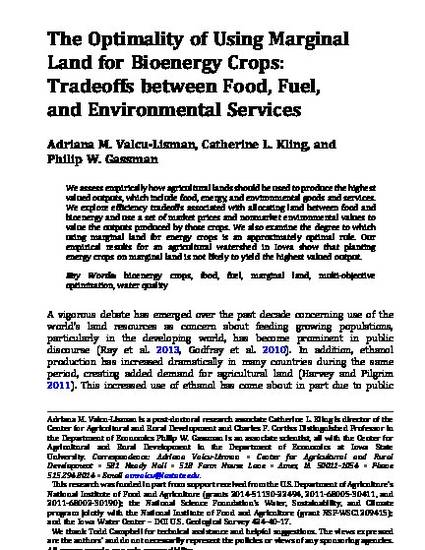
Article
The Optimality of Using Marginal Land for Bioenergy Crops: Tradeoffs between Food, Fuel, and Environmental Services
Agricultural and Resource Economics Review
Document Type
Article
Disciplines
Publication Version
Published Version
Publication Date
8-1-2016
DOI
10.1017/age.2016.20
Abstract
We assess empirically how agricultural lands should be used to produce the highest valued outputs, which include food, energy, and environmental goods and services. We explore efficiency tradeoffs associated with allocating land between food and bioenergy and use a set of market prices and nonmarket environmental values to value the outputs produced by those crops. We also examine the degree to which using marginal land for energy crops is an approximately optimal rule. Our empirical results for an agricultural watershed in Iowa show that planting energy crops on marginal land is not likely to yield the highest valued output.
Rights
This is an Open Access article, distributed under the terms of the Creative Commons Attribution licence (http://creativecommons.org/licenses/by/4.0/), which permits unrestricted re-use, distribution, and reproduction in any medium, provided the original work is properly cited.
Copyright Owner
The authors
Copyright Date
2016
Language
en
File Format
application/pdf
Citation Information
Adriana M. Valcu-Lisman, Catherine L. Kling and Philip W. Gassman. "The Optimality of Using Marginal Land for Bioenergy Crops: Tradeoffs between Food, Fuel, and Environmental Services" Agricultural and Resource Economics Review Vol. 45 Iss. 2 (2016) p. 217 - 245 Available at: http://works.bepress.com/catherine_kling/94/

This article is from Agricultural and Resource Economics Review 45 (2016): 217-245, doi:10.1017/age.2016.20. Posted with permission.